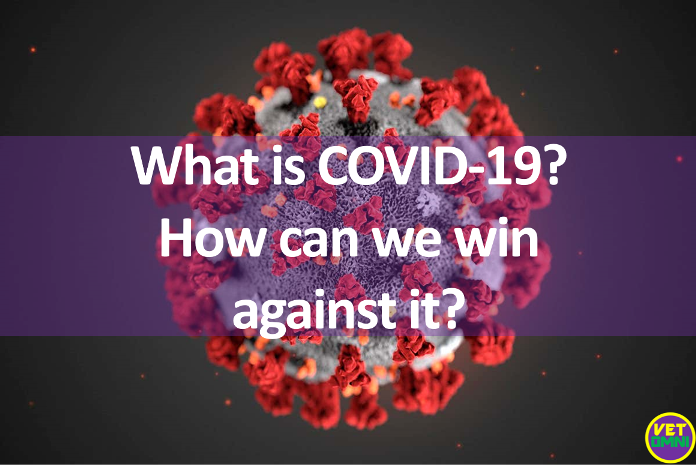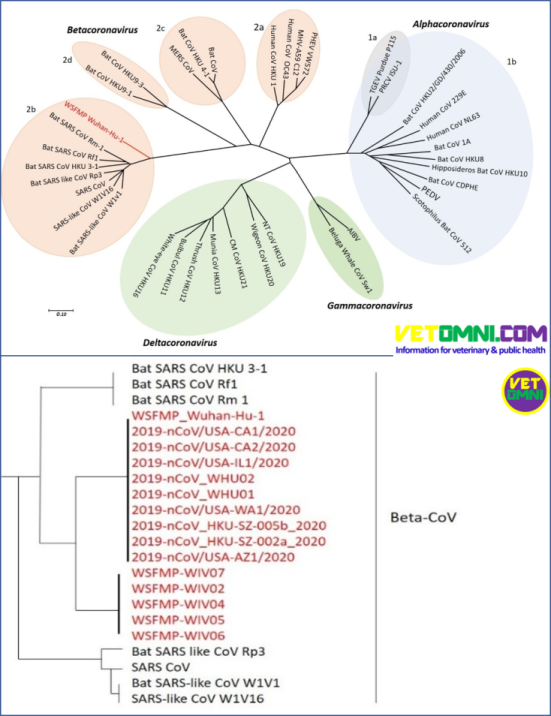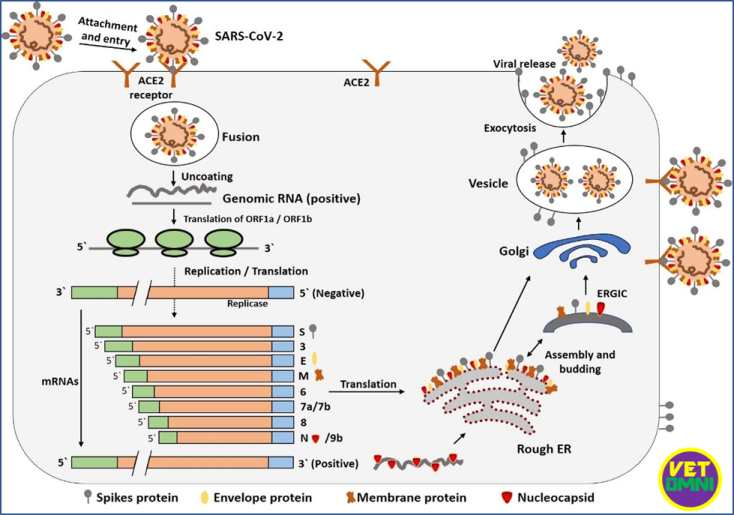
Novel coronavirus, a member of the family Coronaviridae, is named so because of spikes on the outer surface of the virus. These are 65 to 125 nm in diameter, posses single-stranded genomic RNA material, and have 26 to 32 kbp genomic size.
The disease caused by the novel coronavirus, coronavirus disease 2019 (COVID-19), is a highly communicable and pathogenic viral infection caused by severe acute respiratory syndrome coronavirus 2 (SARS-CoV-2). It first appeared in Wuhan, China in November 2019, and then spread throughout the world in a very short period.
Primary reservoirs of coronavirus

(Image source: Elsevier)
According to the American Chemical Society (ASC), scientists suggest that pangolins (scaly, ant-eater like animals) are the missing link for SARS-CoV-2 transmission between humans and bats. While some scientists suggest snakes as the intermediate host of SARS-CoV-2.
While bats could be the primary reservoir, as genomic analysis revealed that SARS-CoV-2, is phylogenetically related to severe acute respiratory syndrome-like (SARS-like) bat viruses.

How COVID-19 enters and affect the human body?
Coronavirus causes respiratory, neurologic, hepatic, and enteric diseases, and these are widespread in humans and other vertebrates. SARS-CoV-2 predominantly infects lower airways, by binding angiotensin-converting enzyme 2 (ACE-2) receptors, and hence binds to alveolar epithelial cells, says CDC.

WHO categorizes the replication of coronavirus into three main phases. In the first phase, airways become filled with fluid and debris, by invading the cells of the lungs.
In the second phase, immune hyperreactivity occurs, when lung cells are bombarded with immune cells to repair lung tissues.
In the third phase, patients need ventilators to breathe as the progression of SARS disease occurs. Pulmonary destruction occurs due to which symptoms of severe pneumonia appear.
According to the CDC, the incubation period of the virus is 5.1 days, but it may vary from 2-14 days. Person-to-person contact is the main cause of transmission of the virus by sneezing or coughing. Chinese researchers isolated SARS-CoV-2 from a swab sample of a confirmed patient’s feces indicating fecal-oral transmission.
Who is at a higher risk of acquiring COVID-19?
According to CDS, the following people are at higher risk of getting the disease COVID-19:
- Immunocompromised persons (e.g. people using corticosteroids, having bone marrow or organ transplant, etc)
- People suffering from mild to severe asthma, or chronic lung disease
- People of any age group with severe obesity and renal failure
Ways to manage respiratory symptoms of coronavirus at home
- Monitor your symptoms; if get severe, call the healthcare provider
- Take rest and stay hydrated
- Cover your cough and sneezes
- Wash your hands often, with soap and water for at least 20 seconds
- Avoid sharing personal items
- Clean all surfaces
- Stay isolated from others or use self-quarantine
When to end self-isolation for COVID-19?
If for at least 72 hours, one had no fever without the use of medicine and other symptoms have also improved (for example cough, and shortness of breath), and 24 hours apart they received two negative COVID-19 tests in a row, a person is said to be negative and allowed to end self-isolation, says CDC.
Basic steps to prepare the clinic for COVID-19 patients
Before patients arrive:
- Prepare the clinic: know which of the patients are at higher risk
- Communicate with the patient: during reminder calls ask patients about their symptoms
- Prepare the waiting area and patient rooms
When patients arrive:
- Place staff at the entrance: provide facemask to the symptomatic patients
- Separate the sick patients: place the sick patient in the isolated room as quickly as possible
After patients are assessed:
- Clean frequently touched surfaces, using disinfectants, clean beds, seating, counters, etc.
- Notify the health department for the patient with COVID-19 symptoms.
Author: Sadaf Shaheen, Department of Pathobiology, Faculty of Veterinary Sciences, Bahauddin Zakariya University, Multan, Pakistan.
Informative
WOW. everyone should read it. Because it is very informative and share the information with others
Very informative
Wonderful… good job
So many ambiguities got cleared ?
Nice